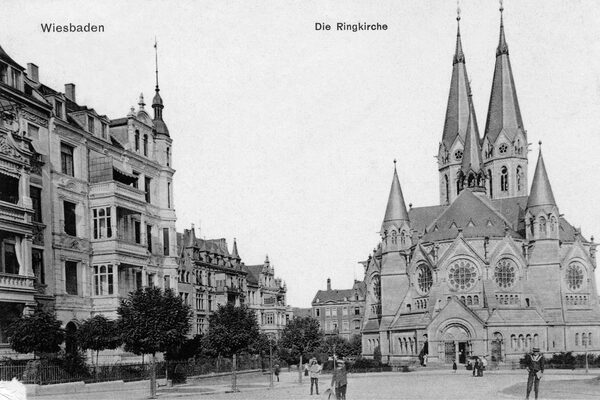Places of Historicism - Rheingauviertel
Wiesbaden is a city of the 19th century. This unique development is based on the fact that today's Hessian state capital grew from a modest small town with 2,500 inhabitants in 1800 to a large city with 100,000 inhabitants in 1905.
The Rheingau district
The development of the Rheingauviertel began shortly before the turn of the century and was completed in 1910. The streets were laid out between 1902 and 1906. Despite the high density of this quarter, it is one of the most popular residential areas in Wiesbaden, partly due to the low level of car traffic. Professor Reinhard Baumeister drew up an expert report that served as the basis for the urban planning design.
He turned away from the grid layout and instead designed a winding street network into which asymmetrical building complexes could be integrated. The four-storey tenements are similar in typology to those in other districts, but have special architectural details. The houses built before 1900 are in the late historicist style, while the Art Nouveau style is more prevalent in the western part.
The Rheingau district
Further information
City archive
Address
65197 Wiesbaden
Postal address
65029 Wiesbaden
Arrival
Notes on public transport
Public transportation: Bus stop Kleinfeldchen/Stadtarchiv, bus lines 4, 17, 23, 24 and 27 and bus stop Künstlerviertel/Stadtarchiv, bus line 18.
Telephone
- +49 611 313022
- +49 611 313977
Opening hours
Opening hours of the reading room:
- Monday: 9 a.m. to 12 p.m.
- Tuesday: 9 am to 4 pm
- Wednesday: 9 am to 6 pm
- Thursday: 12 to 16 o'clock
- Friday: closed
